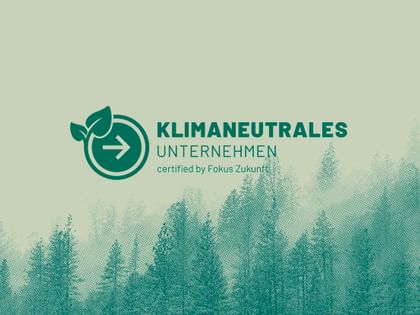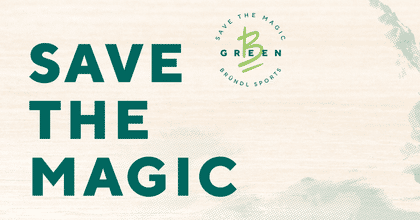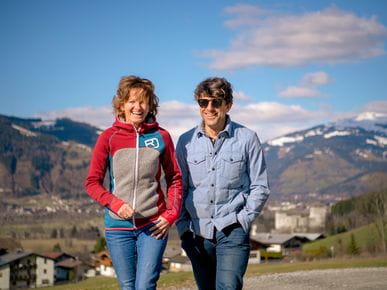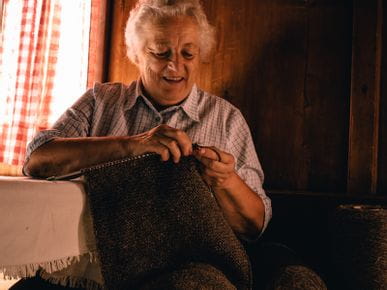Bründl Sports is climate-neutral
We calculated our CO2 emissions, defined our reduction options and compensated our emissions. We are now proud to announce that we have been a climate-neutral business since March 2021. Here you will learn how we got to this point, what climate neutrality actually means and how we will continue to develop sustainably in future.
The consequences of global warming are becoming more and more tangible. Something has to be done urgently to combat human-driven climate change. We have realized that voluntary emissions reductions on the part of the business community are essential in order to counteract climate change effectively. That’s why, in cooperation with the sustainability consulting company Fokus Zukunft, we went ahead and measured the ecological footprint of our company. Why? Our foremost goal is to reduce emissions, if not eliminate them completely. And for those emissions that cannot be reduced, to compensate them.

What is an ecological footprint?
The ecological footprint (also known as CO2 footprint or carbon footprint) is a measurement of the quantity of greenhouse gases (measured in CO₂ equivalents), which directly or indirectly result from the activity of an individual, a business, organization, event or product. It refers to the resulting emissions from raw materials, production, transport, trade, usage, recycling and disposal. CO2 emissions that are due, for example, to electric consumption in shops and offices, to water use and waste production in a company, fuel use in businesses, consumable materials such as paper, though also due to everyday work processes involving employees. However, production & manufacture of products that we sell in the shop does not fall within the scope of our CO2 balance. That said, in future we want to demonstrate a clear preference for suppliers with strong sustainability concepts, whilst paying even closer attention to the sustainability of products we purchase.

How did we measure the size of our ecological footprint?
Our emissions balance was calculated by using the official guidelines of the Greenhouse Gas Protocol. However, before Fokus Zukunft was able to calculate anything, our employees were required to collect a wide range of data, e.g. annual water and electricity use, details about our vehicle fleet, business travel, paper usage etc. Furthermore, an employee survey was used to determine the additional impact of our daily work processes on our CO2 footprint.
The collected usage data (e.g. electricity or fuel use) was then expressed according to emission factor in terms of emissions per unit (e.g. kilowatt hours of electricity or liters of gasoline).

Our CO2 footprint
The ecological footprint of Bründl Sports amounts to 1540 tons of CO2, equating to 3.63 tons per employee. For comparison purposes, an average Austrian is responsible for roughly 8.5 tons of CO2 annually.
The primary drivers of our CO2 emissions are the heating costs from all of our shops and offices, though our employee work processes also constitute a significant proportion of our emissions (13.6%).
Let us express these numbers in terms we can all clearly visualize: The consumption of 1542 tons of CO2 is roughly the same as driving 7,339,572 km by car. Put another way, 593 trees would have to be used in order to bind the calculated CO2 emissions of Bründl Sports.
What does climate neutrality mean?
A business is considered climate-neutral when all of its CO2 emissions are compensated. According to the principles for CO2 compensation as laid out in the Kyoto Protocol, emissions for which we are responsible and which are unavoidable should be saved through sponsorship of certified climate protection projects elsewhere, for which those concerned would otherwise not have the means. In order to finance this, companies purchase certificates for qualifying climate protection projects. Each certificate represents 1 ton of CO2 that will be saved due to the project in question. There are numerous climate protection projects worldwide, most of which are focused on renewable energy. As a reward for their commitment, initiators of these projects receive emission credits which can be traded in the form of climate protection certificates. The precise amount is measured, for example, by making a comparison with emissions that would otherwise have resulted from construction of a coal-fired power plant.
ThomasMarzusch.jpg)
How did we compensate our emissions?
Our top priority is to reduce our CO2 emissions. But because it is not possible to be completely emissions-free, the emissions that cannot be reduced are compensated through purchase of climate protection certificates. For 2021, we have compensated for our greenhouse gas emissions by purchasing 1542 certificates on behalf of the projects „UN CER Water Uganda“, „VCS Forest Brazil“ und „GS Cooking Stoves in Tanzania“ ausgeglichen.
Click on the respective project names for further information about each project.
Purchase of these certificates finances projects that reduce or minimize greenhouse gases. This might occur, for example, through reforestation projects, construction of a hydroelectric plant rather than a coal-fired power station, or by supporting developmental aid projects that improve the living conditions of people in poorer regions of the world, e.g. through the distribution of water filters.
Why do we compensate by supporting international projects rather than projects inside Austria or Europe?
Climate change is global, it makes no matter where CO2 emissions are expelled or saved, at the end of the day it is the sum total of greenhouse gases that is decisive. In the internationally binding Kyoto Protocol, it is expressly stipulated that so-called climate protection projects which avoid or reduce greenhouse gas emissions should happen where they are most economical.
As a consequence, many such projects are in threshold and developing countries, since the potential for savings through new technologies is very high there and such projects are significantly more cost-effective. Furthermore, the conditions there with respect to renewable energies (sun, wind, water and biomass) are frequently significantly more advantageous. Plus, projects in threshold and developing countries contribute to the improvement of economic, social and ecological circumstances there and promote the achievement of the sustainability goals of the United Nations. For threshold and developing countries, emissions trading is a significant driver in the transfer of clean technologies and sustainability-oriented economic development.
How can we reduce our CO2 emissions?
Let it be clearly stated up front, this is a process. We are committed to ongoing development and improvement. As a first step, it is important to increase awareness amongst all of our employees, but also our partners, suppliers and customers, for the subject of sustainability, and for us all to work together towards finding solutions. In this regard, idea exchange and networking with others is very close to our hearts. Consistent with this, our work adheres to the 17 United Nations Sustainability Goals and we are members of respACT, a corporate platform for responsible business practices. Furthermore, we are partners of Salzburg 2050, a program within Salzburger Land aimed at climate protection, energy transformation and adaption to climate change.
In concrete terms, we have made it our goal to reduce our emissions by 21% by 2024.

How do we want to achieve that?
We established a special taskforce consisting of members of management as well as one “scout” from each of our various divisions, including marketing, purchasing, logistics, IT and, of course, representatives from our shops. This taskforce works in accordance with a set behavioral code and we are constantly exchanging ideas in order to define potentials and appropriate measures with which we can achieve our sustainability goals. We hold employee training workshops, in which we discuss energy savings measures or waste management, while we are also in close contact with our suppliers in order to achieve reduced use of plastics.
Our measures are regularly expanded, prioritized, implemented, measured and communicated.
It is extremely important for us to create awareness that every one of our employees has a personal responsibility, with each individual in a position to make a valuable contribution. Every small step counts.


